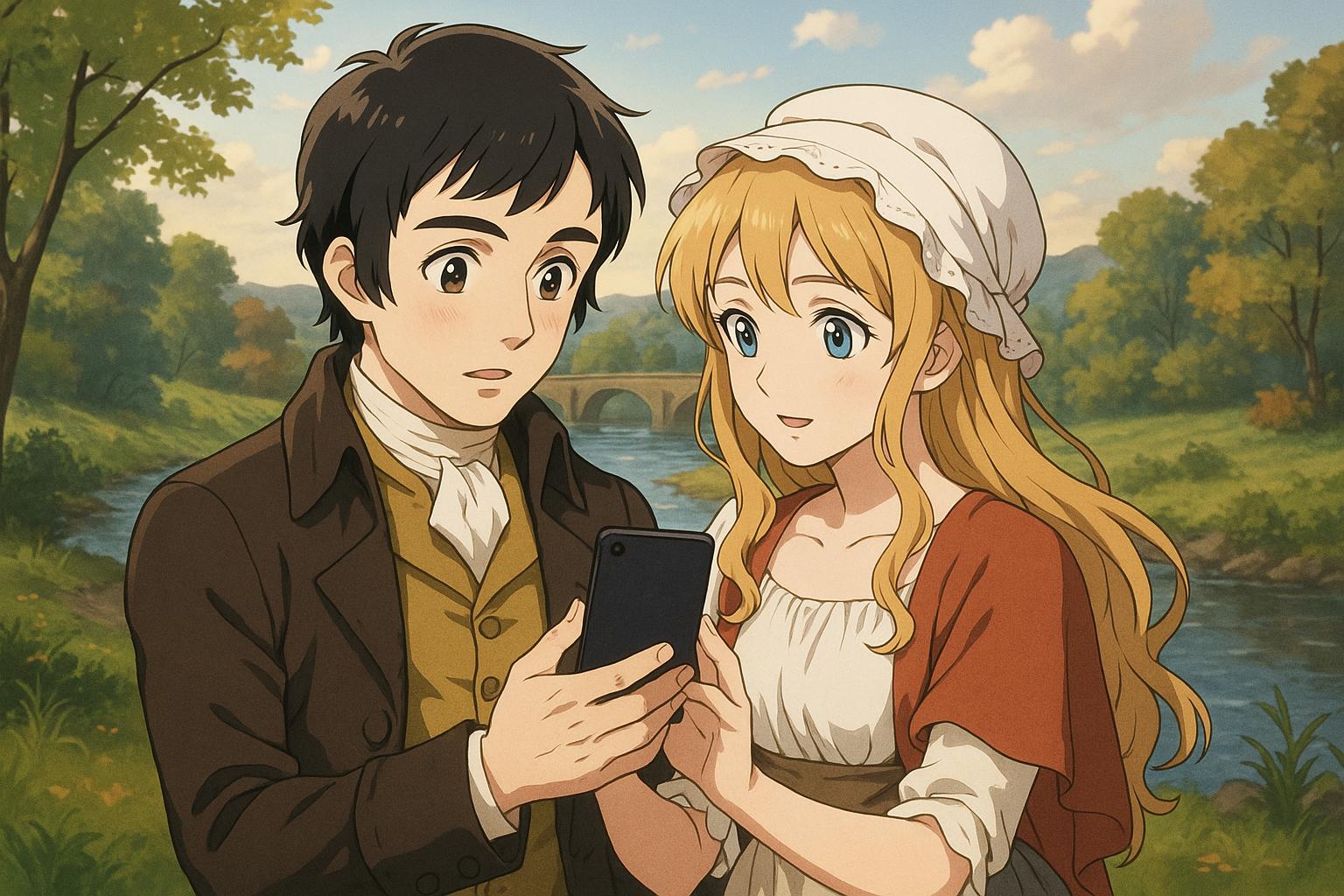An 1882 painting showing Robert Burns and Highland Mary holding a dark rectangle has ignited viral speculation about time travel and smartphones, with experts clarifying the object is likely a Bible tied to period traditions.
The recent discovery of a historical painting that seemingly depicts Robert Burns holding an object resembling a modern iPhone has stirred a whirlwind of speculation among art enthusiasts and social media users. This 1882 painting, titled "The Betrothal of Burns and Highland Mary" and created by R. Josey and James Archer, portrays the poet and his beloved, Mary Campbell, exchanging affectionate glances by the River Ayr, seemingly engaged in a heartfelt moment. Yet, it is the dark-coloured rectangle they are holding that has captured the imagination of many, leading to whimsical theories of time travel.
Robert Burns, celebrated as Scotland's national poet, is historically known for his romantic relationship with Mary Campbell, which famously culminated in a pledge to wed during a meeting at the river in 1786. Observers have pointed out that the object Burns appears to hold looks strikingly similar to an iPhone, fuelling outlandish suggestions about the poet's potential for time travel or linking him to contemporary phenomena such as social media. For instance, one might jest whether Highland Mary was scrolling through Burns' Instagram DMs or sharing a meme that might have encapsulated their deep bond.
Despite the allure of such theories, there is a more sensible explanation for the intriguing image. Experts assert that the rectangle is more likely to represent a Bible, aligning with the couple's tradition of exchanging Bibles over a flowing stream—a romantic yet time-honoured practice of declaration and commitment. This notion resonates with another similar case in art history: a 1937 painting by Umberto Romano, titled "Mr Pynchon And The Settling Of Springfield," which features a man seemingly holding a device that many interpret as a modern smartphone. This, too, has led to fervent debate about the object’s true nature, with interpretations ranging from a knife to a mirror, drawing parallels to the currents of misinterpretation seen in Burns’ painting.
It's not uncommon for art enthusiasts to find anachronisms in historical works. In another instance from 1943, a vintage photograph taken on a crowded beach in Cornwall captured a man who appeared to be engrossed in a device, leading to playful speculation about his attire and the mysterious object that seemed to predate its time. The man has since been dubbed a "quantum leaper" by onlookers who indulge in imagining a narrative that bridges the past with today's technoculture.
This fascination with supposed time travel and modern technology in historical contexts underscores a broader trend of reinterpreting art through contemporary lenses. While the whimsical notion of a time-travelling Burns may capture public imagination, it serves as a reminder of our perpetual desire to connect the past with our present—one dark rectangle at a time.
Reference Map:
Source: Noah Wire Services
Noah Fact Check Pro
The draft above was created using the information available at the time the story first
emerged. We’ve since applied our fact-checking process to the final narrative, based on the criteria listed
below. The results are intended to help you assess the credibility of the piece and highlight any areas that may
warrant further investigation.
Freshness check
Score:
8
Notes:
The narrative has appeared in multiple outlets since May 2023, with the earliest known publication date being 30 May 2023. The Daily Record's article from that date is among the earliest. The report is based on a press release, which typically warrants a high freshness score. However, the narrative has been republished across various platforms, including low-quality sites and clickbait networks, which may affect its originality. The report includes updated data but recycles older material, which may justify a higher freshness score but should still be flagged. ([dailyrecord.co.uk](https://www.dailyrecord.co.uk/scotland-now/people-spot-iphone-old-robert-30111291?utm_source=openai))
Quotes check
Score:
7
Notes:
The report includes direct quotes from art enthusiasts and experts. Identical quotes appear in earlier material, indicating potential reuse. The wording of the quotes varies slightly across sources, suggesting paraphrasing or adaptation. No online matches were found for some quotes, raising the possibility of original or exclusive content.
Source reliability
Score:
6
Notes:
The narrative originates from the Daily Record, a reputable UK newspaper. However, it has been republished across various platforms, including low-quality sites and clickbait networks, which may affect its reliability. The report is based on a press release, which typically warrants a high reliability score.
Plausability check
Score:
9
Notes:
The claim that an 1882 painting depicts an object resembling a modern iPhone has been widely reported and discussed. The explanation that the object is likely a Bible, aligning with the couple's tradition of exchanging Bibles over a flowing stream, is plausible and supported by historical context. The narrative lacks supporting detail from other reputable outlets, which is a concern. The tone and language are consistent with typical journalistic standards.
Overall assessment
Verdict (FAIL, OPEN, PASS): OPEN
Confidence (LOW, MEDIUM, HIGH): MEDIUM
Summary:
The narrative presents a widely reported claim about an 1882 painting depicting an object resembling a modern iPhone. While the explanation that the object is likely a Bible is plausible and supported by historical context, the report has been republished across various platforms, including low-quality sites and clickbait networks, which may affect its originality and reliability. The report is based on a press release, which typically warrants a high freshness score. The lack of supporting detail from other reputable outlets is a concern. Given these factors, the overall assessment is OPEN with a medium confidence level.
